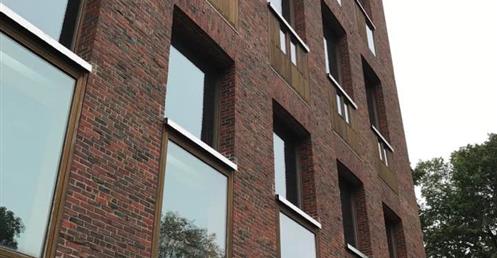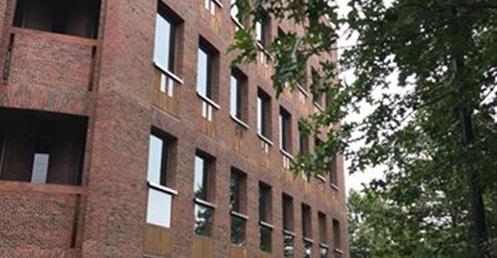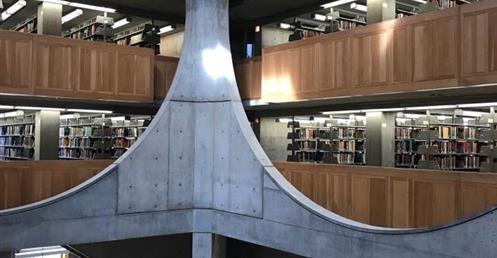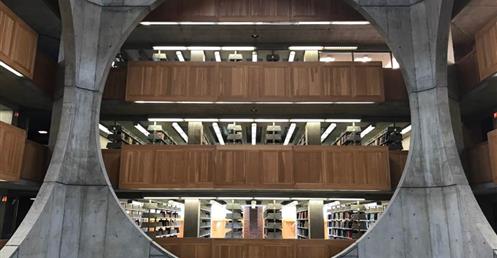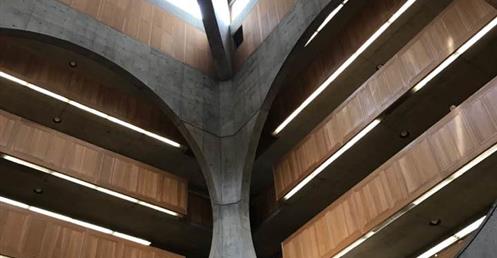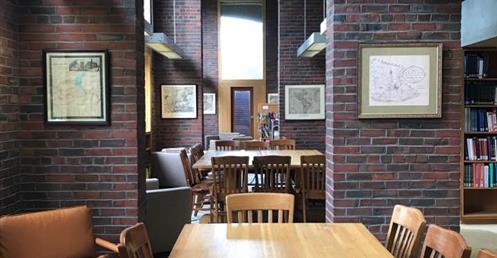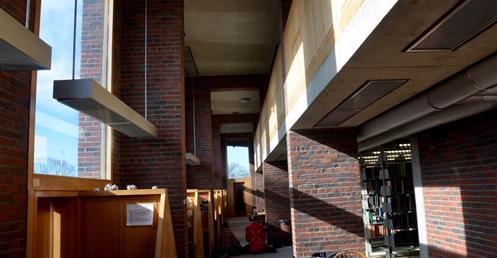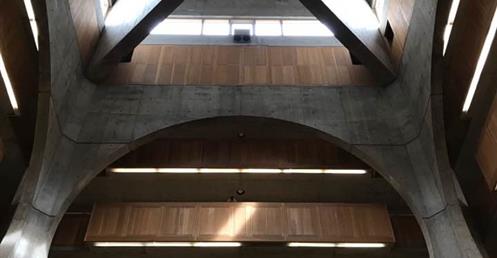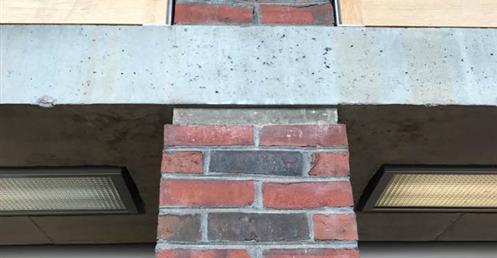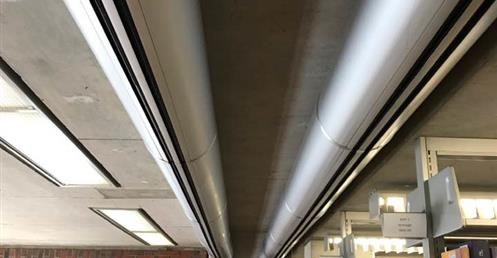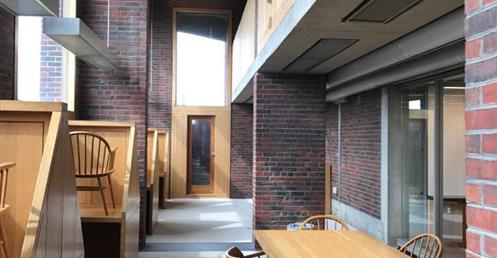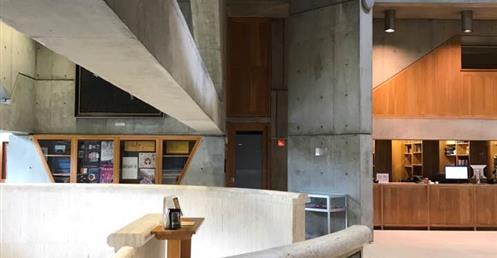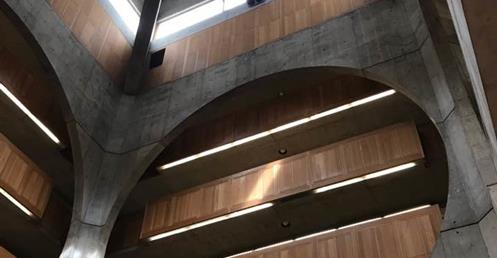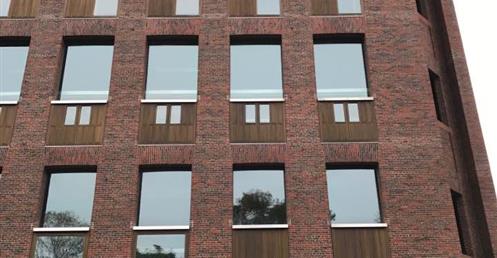Phillips Exeter Academy Library 2017
Exeter, New Hampshire, United States
Completed and designed by Louis Kahn 1972
Photo & travelogue by Sam Lee / Principle from DAX Artech
Quoted from https://www.facebook.com/tasam99?hc_ref=ARQWh3Sxy04YPmp9Q8RIZ1P9RHrSgWlkeIYfXbZPVxFxuY0j0TMWWCqWK5A0H1aTx5s&pnref=story
https://www.exeter.edu/academics/library/about/design-library
Design of the Library
The evolution of plans for the Class of 1945 Library took almost 15 years, from the first ideas for a "new library" to its final form. At least three different projects were undertaken to plan for the library, with the results of the first two bearing no resemblance to what we now know as the Class of 1945 Library. However rocky its inception, the building is now viewed as an architectural gem. In 1997, the Library was awarded the American Institute of Architects’ Twenty-five Year Award. The citation of the award states:
"An outstanding collaboration of design and technology, this icon of cleanly articulated structure is a cultural center and modern architectural masterpiece for the original quadrangle of the renowned Academy. The massive block of dark-red brick reveals a surprising delicacy. It is artistically ahead of its time and will continue to enlighten as a spiritual touchstone of great design for generations of architects."
Initially, the Academy simply planned to put an addition on the original Davis Library, which had been designed by Ralph Adams Cram. When these plans were rejected by the school’s trustees as inadequate solutions to the school’s library requirements, a new effort focused on designing a separate building. The trustees' charge to this effort was "to anticipate the Academy's needs for the next 25 years and to design an exterior that would 'blend in with our beautiful Georgian buildings.'"1
Rodney Armstrong, then Academy Librarian, worked with a faculty committee and an architect appointed by the trustees over the next several years. In 1964, however, newly-appointed principal Richard W. Day, reviewing the results of this effort, which was at the stage of developing final working drawings, was dismayed at what he saw. He fired the architect and started over.
Day appointed Rodney Armstrong to chair a small faculty committee, whose members Armstrong could choose, to develop a program statement for the library, develop plans for a separate building, and recommend an architect to the trustees. In Armstrong's words, Principal Day's charge to the committee was "to rewrite the program and to propose 'the outstanding contemporary architect in the world' to design Exeter's new library. We were to receive and consider suggestions from trustees, colleagues, alumni and friends, and to travel anywhere, here and abroad, as we thought best, to look at buildings." 2
Meeting in 1964 and 1965, the committee conferred with numerous architects before recommending Louis I. Kahn, FAIA, as the architect, whom they admired “for his sympathetic use of brick and his concern for natural light."3 Their recommendation was accepted in November 1965.
The final design document, entitled “Proposals for the Library at Phillips Exeter Academy," also had the subtitle of “Program of Requirements for the New Library Recommended by the Library Committee of the Faculty." Published in its final version in June 1966, the document is unusual in its approach, breadth, and conclusions.
Working both with Kahn and with Engelhardt, Engelhardt and Leggett, educational consultants from Purdy Station, New York, the committee covered every aspect of the building, from philosophy to practical details, with great emphasis on the atmosphere desired both within and without the building. In addition to outlining functional requirements for the library, the committee specified site and exterior design, design details, staff facilities, spatial relationships, and items such as air conditioning, lighting, electrical and mechanical equipment, and security, fire, and water protection. Some excerpts best capture the flavor of the document:
“The quality of a library, by inspiring a superior faculty and attracting superior students, determines the effectiveness of a school. No longer a mere depository of books and magazines, the modern library becomes a laboratory for research and experimentation, a quiet retreat for study, reading and reflection, the intellectual center of the community.… Fulfilling needs of a school expected eventually to number one thousand students, unpretentious, though in a handsome, inviting contemporary style, such a library would affirm the regard at the Academy for the work of the mind and the hands of man."4
One of the most striking notes in the document is that “the emphasis should not be on housing books but on housing readers using books. It is therefore desirable to seek an environment that would encourage and insure the pleasure of reading and study."5 Following this logic, the committee goes on to recommend a variety of choices of seating areas for students and faculty, including both hard and soft chairs, near windows and in interior areas of the building. A requirement for either a garden or a shaded terrace at another level is also specified.
At the end of the document, discussing spatial relationships, the committee stresses “that a reader as he enters be able to sense at once the building’s plan."6 Kahn admirably accomplished this charge. Entering from the main entrances on the ground floor, and climbing the stairs to the first floor, the visitor can immediately perceive the relationship of reference area, circulation desk, and book stacks.
Supervision of student behavior and security of the collections were not given much prominence in the design document, as the Academy’s experience with both had been good. This led to a specification that the circulation desk be located on the first floor, rather than on the ground floor directly inside the main entrance, as is traditional in most libraries. Placing the circulation desk closer to the center of library activities ensured that service took priority over supervision.
Embracing the committee’s specification on the use of traditional Exeter brick, stone, and slate, Kahn also incorporated extensive use of natural wood (primarily teak and white oak), travertine, and concrete, producing a building that is warm, impressive and highly functional.
菲利浦艾克斯特中學圖書館 2017
設計 路易康 1972
攝影&旅記 李逸仁建築師 / 大序建築師事務所主持建築師
……動盪的思緒得已撫平,這是進入此圖書館的氛圍,靜靜地觀看這一切。空間的本質象徵著人,書本與光線的結合,光線是生成與區別其空間特質的重要元素,使得書與讀者產生了動態的結合。每本書都是一種奉獻,儲存這些奉獻的地方是近乎神聖的圖書館,向您訴說著此種奉獻。
不需言語,靜謐於此……
Exeter, New Hampshire, United States
Completed and designed by Louis Kahn 1972
Photo & travelogue by Sam Lee / Principle from DAX Artech
Quoted from https://www.facebook.com/tasam99?hc_ref=ARQWh3Sxy04YPmp9Q8RIZ1P9RHrSgWlkeIYfXbZPVxFxuY0j0TMWWCqWK5A0H1aTx5s&pnref=story
https://www.exeter.edu/academics/library/about/design-library
Design of the Library
The evolution of plans for the Class of 1945 Library took almost 15 years, from the first ideas for a "new library" to its final form. At least three different projects were undertaken to plan for the library, with the results of the first two bearing no resemblance to what we now know as the Class of 1945 Library. However rocky its inception, the building is now viewed as an architectural gem. In 1997, the Library was awarded the American Institute of Architects’ Twenty-five Year Award. The citation of the award states:
"An outstanding collaboration of design and technology, this icon of cleanly articulated structure is a cultural center and modern architectural masterpiece for the original quadrangle of the renowned Academy. The massive block of dark-red brick reveals a surprising delicacy. It is artistically ahead of its time and will continue to enlighten as a spiritual touchstone of great design for generations of architects."
Initially, the Academy simply planned to put an addition on the original Davis Library, which had been designed by Ralph Adams Cram. When these plans were rejected by the school’s trustees as inadequate solutions to the school’s library requirements, a new effort focused on designing a separate building. The trustees' charge to this effort was "to anticipate the Academy's needs for the next 25 years and to design an exterior that would 'blend in with our beautiful Georgian buildings.'"1
Rodney Armstrong, then Academy Librarian, worked with a faculty committee and an architect appointed by the trustees over the next several years. In 1964, however, newly-appointed principal Richard W. Day, reviewing the results of this effort, which was at the stage of developing final working drawings, was dismayed at what he saw. He fired the architect and started over.
Day appointed Rodney Armstrong to chair a small faculty committee, whose members Armstrong could choose, to develop a program statement for the library, develop plans for a separate building, and recommend an architect to the trustees. In Armstrong's words, Principal Day's charge to the committee was "to rewrite the program and to propose 'the outstanding contemporary architect in the world' to design Exeter's new library. We were to receive and consider suggestions from trustees, colleagues, alumni and friends, and to travel anywhere, here and abroad, as we thought best, to look at buildings." 2
Meeting in 1964 and 1965, the committee conferred with numerous architects before recommending Louis I. Kahn, FAIA, as the architect, whom they admired “for his sympathetic use of brick and his concern for natural light."3 Their recommendation was accepted in November 1965.
The final design document, entitled “Proposals for the Library at Phillips Exeter Academy," also had the subtitle of “Program of Requirements for the New Library Recommended by the Library Committee of the Faculty." Published in its final version in June 1966, the document is unusual in its approach, breadth, and conclusions.
Working both with Kahn and with Engelhardt, Engelhardt and Leggett, educational consultants from Purdy Station, New York, the committee covered every aspect of the building, from philosophy to practical details, with great emphasis on the atmosphere desired both within and without the building. In addition to outlining functional requirements for the library, the committee specified site and exterior design, design details, staff facilities, spatial relationships, and items such as air conditioning, lighting, electrical and mechanical equipment, and security, fire, and water protection. Some excerpts best capture the flavor of the document:
“The quality of a library, by inspiring a superior faculty and attracting superior students, determines the effectiveness of a school. No longer a mere depository of books and magazines, the modern library becomes a laboratory for research and experimentation, a quiet retreat for study, reading and reflection, the intellectual center of the community.… Fulfilling needs of a school expected eventually to number one thousand students, unpretentious, though in a handsome, inviting contemporary style, such a library would affirm the regard at the Academy for the work of the mind and the hands of man."4
One of the most striking notes in the document is that “the emphasis should not be on housing books but on housing readers using books. It is therefore desirable to seek an environment that would encourage and insure the pleasure of reading and study."5 Following this logic, the committee goes on to recommend a variety of choices of seating areas for students and faculty, including both hard and soft chairs, near windows and in interior areas of the building. A requirement for either a garden or a shaded terrace at another level is also specified.
At the end of the document, discussing spatial relationships, the committee stresses “that a reader as he enters be able to sense at once the building’s plan."6 Kahn admirably accomplished this charge. Entering from the main entrances on the ground floor, and climbing the stairs to the first floor, the visitor can immediately perceive the relationship of reference area, circulation desk, and book stacks.
Supervision of student behavior and security of the collections were not given much prominence in the design document, as the Academy’s experience with both had been good. This led to a specification that the circulation desk be located on the first floor, rather than on the ground floor directly inside the main entrance, as is traditional in most libraries. Placing the circulation desk closer to the center of library activities ensured that service took priority over supervision.
Embracing the committee’s specification on the use of traditional Exeter brick, stone, and slate, Kahn also incorporated extensive use of natural wood (primarily teak and white oak), travertine, and concrete, producing a building that is warm, impressive and highly functional.
菲利浦艾克斯特中學圖書館 2017
設計 路易康 1972
攝影&旅記 李逸仁建築師 / 大序建築師事務所主持建築師
……動盪的思緒得已撫平,這是進入此圖書館的氛圍,靜靜地觀看這一切。空間的本質象徵著人,書本與光線的結合,光線是生成與區別其空間特質的重要元素,使得書與讀者產生了動態的結合。每本書都是一種奉獻,儲存這些奉獻的地方是近乎神聖的圖書館,向您訴說著此種奉獻。
不需言語,靜謐於此……
